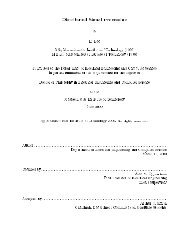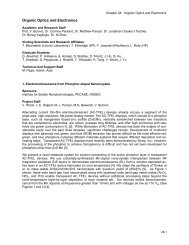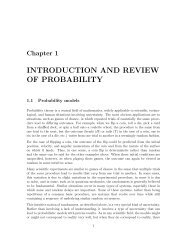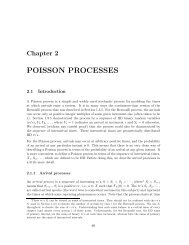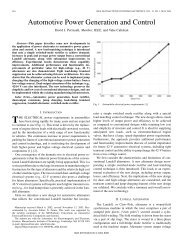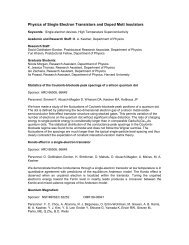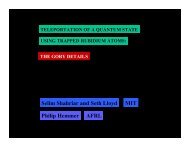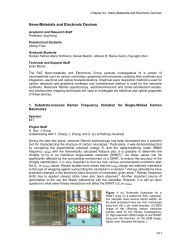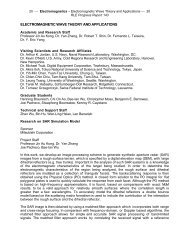Electromagnetic Fields and Energy - Chapter 5 ... - MIT
Electromagnetic Fields and Energy - Chapter 5 ... - MIT
Electromagnetic Fields and Energy - Chapter 5 ... - MIT
Create successful ePaper yourself
Turn your PDF publications into a flip-book with our unique Google optimized e-Paper software.
Sec. 5.6 Solutions to Poisson’s Equation 23<br />
Fig. 5.6.2 Equipotentials <strong>and</strong> field lines for configuration of Fig. 5.6.1<br />
showing graphically the superposition of particular <strong>and</strong> homogeneous<br />
parts that gives the required potential.<br />
The variable x in (5) has been replaced by x − vt. With this moving charge distribution,<br />
the field also moves. Thus, (10) becomes<br />
<br />
ρ o cosh βy<br />
Φ = 1 − cos β(x − vt) (12)<br />
o β 2 cosh βa<br />
Note that the homogeneous solution is now a linear combination of the first <strong>and</strong><br />
third solutions in the middle column of Table 5.4.1.<br />
As the space charge wave moves by, the charges induced on the perfectly<br />
conducting walls follow along in synchronism. The current that accompanies the<br />
redistribution of surface charges is detected if a section of the wall is insulated from<br />
the rest <strong>and</strong> connected to ground through a resistor, as shown in Fig. 5.6.1. Under<br />
the assumption that the resistance is small enough so that the segment remains at<br />
essentially zero potential, what is the output voltage v o ?<br />
The current through the resistor is found by invoking charge conservation for<br />
the segment to find the current that is the time rate of change of the net charge on<br />
the segment. The latter follows from Gauss’ integral law <strong>and</strong> (12) as<br />
l/2<br />
<br />
q = w o E y dx<br />
−l/2 y=−a<br />
wρ o<br />
= tanh βa sin β l<br />
− − vt (13)<br />
β<br />
2<br />
2<br />
+ sin β l<br />
+ vt <br />
2<br />
It follows that the dynamics of the traveling wave of space charge is reflected in a<br />
measured voltage of<br />
dq 2Rwρ ov βl<br />
v o = −R = − tanh βa sin sin βvt (14)<br />
dt β<br />
2



